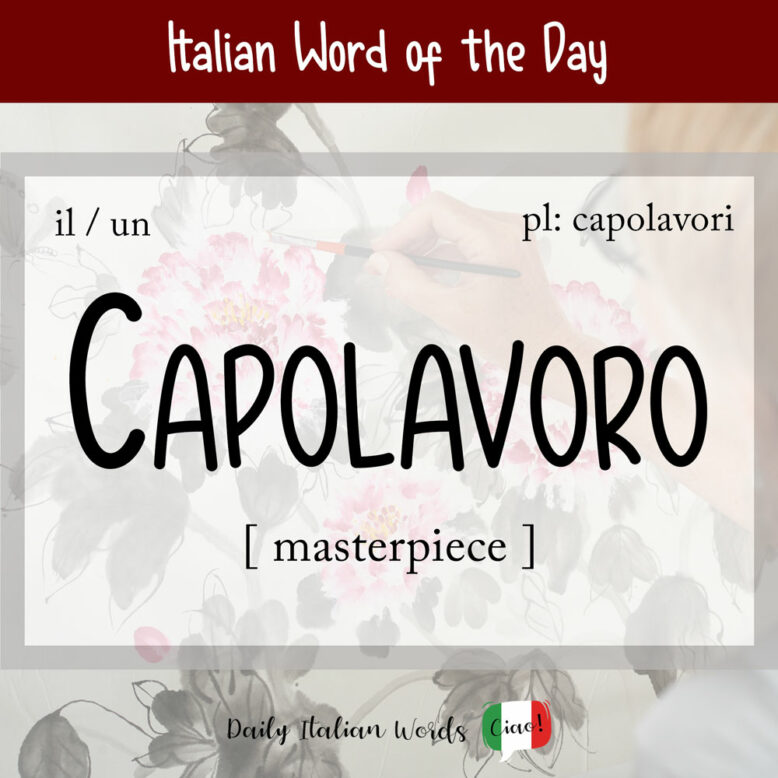The word for masterpiece or best work in Italian is capolavoro (masculine, plural: capolavori). It is the combination of the words capo (head / extremity) and lavoro (work / job).

Traditionally capolavoro refers to the very best piece of work by an artist or a writer, or of a particular era or style. Some examples of famous capolavori include:
- La Mona Lisa, il capolavoro di Leonardo da Vinci = The Mona Lisa, Leonardo da Vinci’s masterpiece
- La Divina Commedia, il capolavoro di Dante Alighieri = The Divine Comedy, Dante Alighieri’s masterpiece
- L’Ultima Cena, il capolavoro del Rinascimento italiano = The Last Supper, the masterpiece of the Italian Renaissance
By extension, it may also denote a great example of someone’s work in the fields of art, literature, cooking and so on without it necessarily being the best.
L’ultimo film di Martin Scorsese è un capolavoro.
The latest film by Martin Scorsese is a masterpiece.

Capolavoro may also be used in an ironic sense to talk about something of very poor quality or a poorly executed activity.
Questo tema è un capolavoro di errori grammaticali!
This essay is a masterpiece of grammatical errors!
Hai fatto un bel capolavoro!
Look at the mess you’ve made! / Now look what you’ve done!
Finally it can refer to the test piece that a worker hired on probation must produce at the end of a relevant period to demonstrate their professional ability.
Heather Broster is a graduate with honours in linguistics from the University of Western Ontario. She is an aspiring polyglot, proficient in English and Italian, as well as Japanese, Welsh, and French to varying degrees of fluency. Originally from Toronto, Heather has resided in various countries, notably Italy for a period of six years. Her primary focus lies in the fields of language acquisition, education, and bilingual instruction.


